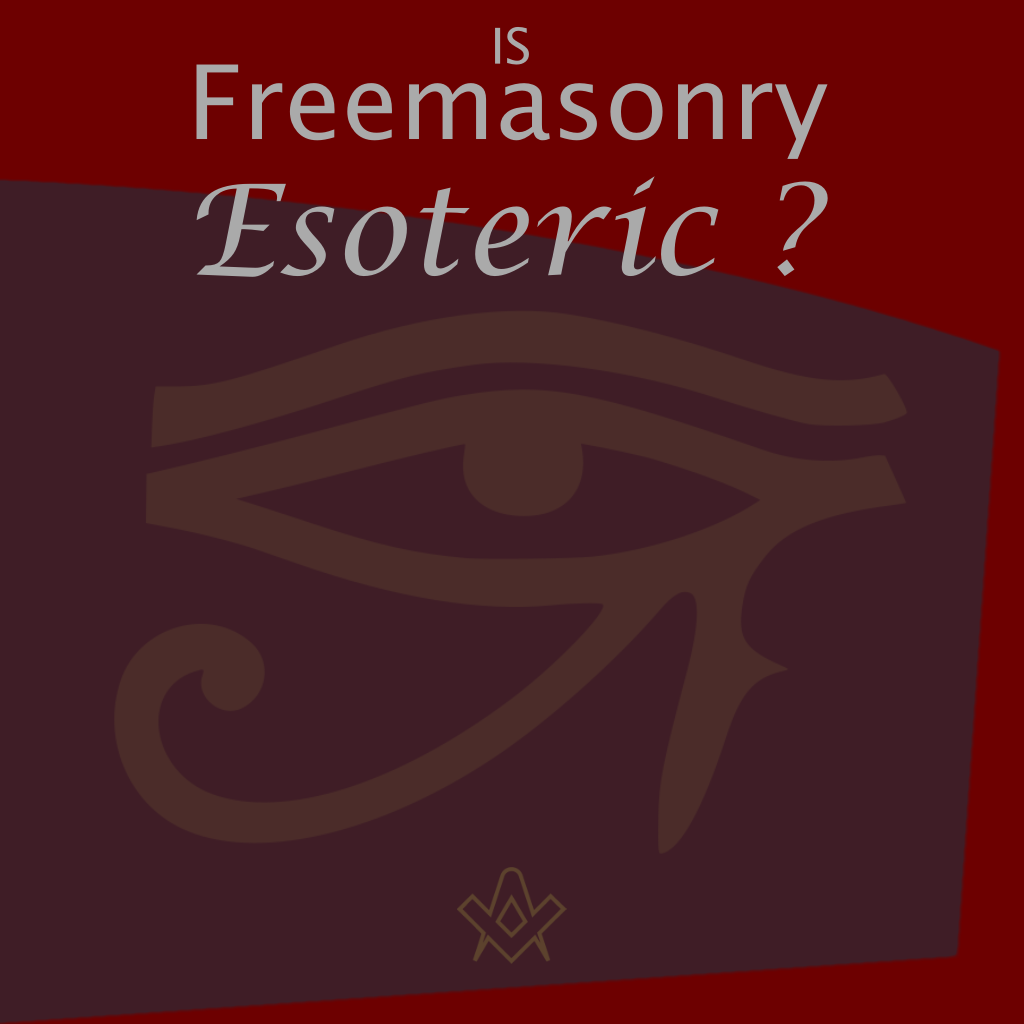In nearly two decades of interest and research into Freemasonry and its history, I have regularly been asked – and indeed asked myself – is Freemasonry esoteric?
On Chris Hodapp’s Freemasons for Dummies blog, I found a post entitled ‘Esotericism is a Matter of Degrees‘ by eminent Freemason and scholar Art de Hoyos who addresses the question: ‘Is Freemasonry esoteric, or not? His short answer: ‘Yes, no, maybe’.
This pretty much sums up the feeling of many who have fallen down that particular helter skelter rabbit hole.
And just like Alice who fell down a not dissimilar rabbit hole, we often find much that is illogical, incomprehensible, or just plain nonsensical.
But, there is also much that can be attributed to genuine esoteric practices or traditions. I say attributed because it does not originatewith Freemasonry.
This is where is gets even more tricky because there are some who insist Freemasonry originated thousands of years ago, which is evidently not true.
That’s where the attributed bit comes in. If we want to, we can find ideas, symbols and mythology that matches those that we can attribute to a myriad of esoteric systems, initiatory cults, mystery traditions and wisdom texts, such as those found in the Kabbalah, ancient Egypt, alchemy, Hermeticism, Rosicrucianism and so forth.
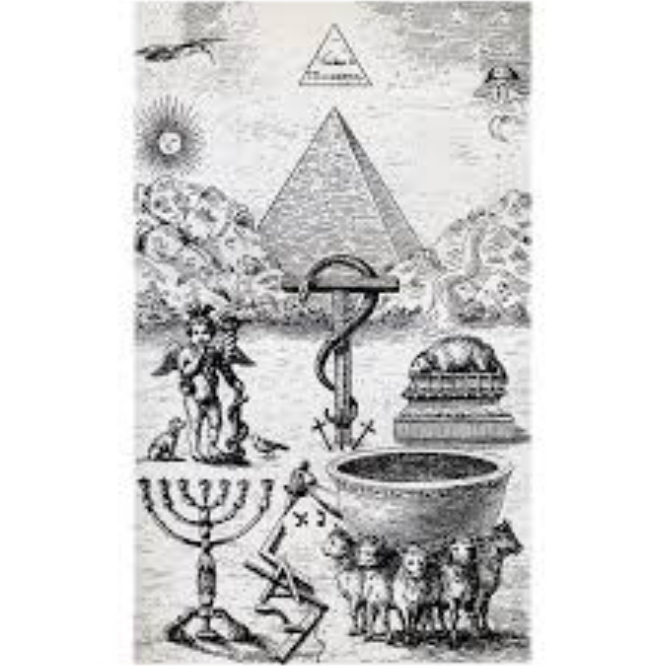
Frontispiece to Le tuileur – expert de sept grades, Paris, 1836.
IMAGE LINKED: wikimedia Attribution 4.0 International (CC BY 4.0)
When I started researching my first book The Masonic Magician: The Life and Death of Count Cagliostro and His Egyptian Rite(co-authored with Robert L. D. Cooper) I was convinced that we had found the holy grail of esoteric Freemasonry in the ‘Egyptian Rite’ of Count Cagliostro.
I fell under the romantic spell of his tragic story and the lure of his purported magical knowledge and skills.
I didn’t want to see the darker sides of him that so many people had historically highlighted – the charlatan, the con-man, the pimp.
But over the years, as I became a far better researcher, and more importantly a far less biased researcher, I realised that I had fallen for his manipulative charms the way others had during his lifetime.
There is nothing new in so-called ‘gurus’ or ‘Masters’ using manipulation and the vulnerability of their followers to extort money and adoration via the promise of secret wisdom.
But once we uncover our vulnerabilities and own them, we are no longer at the mercy of such people and their promises.
I still find Cagliostro an endlessly fascinating character and continue to research and write about him, and the subject of esoterica and the occult, but I do it with a far more level-headed, unemotional and academically-minded skill set.
All that is not to say that there is no esoteric wisdom or teachings in Cagliostro’s Egyptian Rite – there is – but it has no connection to anything from ancient Egypt, and at best is just another additional ritual, filled with Biblical and alchemical symbology, and based on Masonic ritual structure.
That does not dilute its historical importance or esoteric teachings but it demonstrates perfectly that some versions of (fringe) Freemasonry can be esoteric but only if we decide it is and/or create something to back up that narrative.
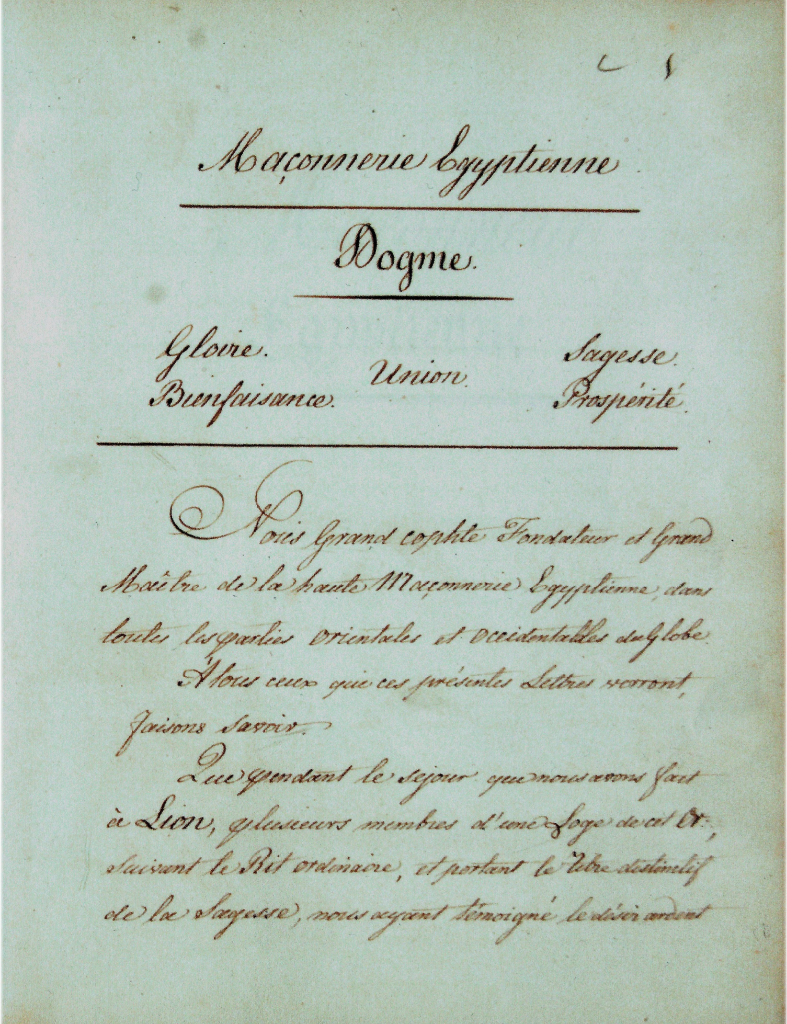
First page of Cagliostro’s ‘Egyptian Masonry’ (author’s collection)
Photo Credit: Yvonne Cooper
Art de Hoyas talks of the ‘Masonic onion’, the layers of esoteric symbolism, traditions and language detected, or sought after, in many aspects of the rituals Freemasonry:
…when someone describes himself as an ‘esoteric Mason,’ it quite often means someone who sees, and embraces, what appears to be aspects of the ‘Western Esoteric Tradition’ in our rituals; i.e., some affinity to the symbolism of Hermeticism, Gnosticism, Neoplatonism, Kabbalah, etc.
Freemasonry is an eclectic organization and, at various times, we have borrowed the language and symbols of these and other traditions.
The question is, do our rituals really teach these things as ‘realities’ or we use them to stimulate thought—or both?
We are repeatedly told not to mistake a symbol for the thing symbolized. In some cases, I believe that is what has happened, while in others, I believe we do indeed have vestiges of other traditions.
But even when they are there, they may be only one layer thick on our Masonic onion.
Humans love patterns and have a desire to discover ‘secrets’, so we tend to look for things that resonate with or confirm our deeply held beliefs or narratives – known in psychology as ‘confirmation bias’:
Confirmation bias is the tendency to search for, interpret, favor, and recall information in a way that confirms or supports one’s prior beliefs or values.
People display this bias when they select information that supports their views, ignoring contrary information, or when they interpret ambiguous evidence as supporting their existing position.
The effect is strongest for desired outcomes, for emotionally charged issues, and for deeply entrenched beliefs.
Confirmation bias cannot be eliminated entirely, but it can be managed, for example, by education and training in critical thinking skills.
– Source: Wikipedia
There is nothing wrong with looking for esoteric symbols or teachings in Freemasonry, or if you believe you find them, following those teachings – what is wrong is insisting or claiming that these teachings are what Freemasonry is really about, or where its origins ‘truly’ lie.
There are those that deny any evidence of the esoteric in Freemasonry and those that claim that Freemasonry is esoteric and nothing more.
Both sides probably need to read a bit more and confirm or deny a bit less.
There is comfort in knowing that there is something for everyone in Freemasonry if you want or need it – similar to the fabled bridal ditty, Masonry definitely includes: ‘Something Old, Something New, Something Borrowed, Something Blue.’
Art de Hoyas concludes his piece with this valuable advice:
My point is to quit quibbling over such things, and find the common ground where we “can best work and best agree.”
If esotericism interests you, that’s fine; if not, that’s also fine.
My personal library is well-stocked with enough material on both sides to make anyone think and in favor of, or against, any position.
The important thing is to be well-educated, and understand what we know first.
Before you reach for the stars, make sure your feet are firmly planted on the ground. Make yourself into someone who can be taken seriously.
Learn the facts about our origins based upon what we know.
I sometimes speak about “historical records” versus “hysterical documents”. Before you buy into such fantasies as “Freemasonry descended from the ancient Egyptians”, get a quick education.
Art de Hoyas
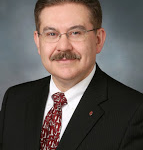
Arturo de Hoyos is Grand Archivist and Grand Historian of the Supreme Council, 33°, S.J., and an executive officer at the Scottish Rite’s headquarters, the “House of the Temple”, in Washington, D.C.
The author, editor, and translator of more than 25 books and many articles, he’s considered America’s foremost scholar on the history, rituals, and symbolism of Scottish Rite Freemasonry, and most other Masonic orders, rites, and systems.
He has travelled and lectured extensively on Freemasonry, and been featured on numerous television and radio programs, including NBC Dateline’s “Secrets of the Lost Symbol,” CNN’s “The Situation Room,” ABC Nightly News, Washington D.C.’s FOX 5 News, WAMU Radio’s “Metro Connection,” The History Channel, The Voice of America, and more.
Source: Amazon
Art’s post ‘Esotericism is a Matter of Degrees’ was reproduced on Chris Hodapp’s Freemasons for Dummies blog on 30 December 2016 – it is available to read in its entirety on the Scottish Rite website at: https://scottishrite.org/scottish-rite-myths-and-facts/is-freemasonry-esoteric/
The essay originally appeared in the March/April 2017 issue of The Scottish Rite Journal—available online and via the free app for Apple and Android devices, just visit your preferred app store and search “Scottish Rite Journal.”
Article by: Philippa Lee. Editor

Philippa Lee (writes as Philippa Faulks) is the author of eight books, an editor and researcher.
Philippa was initiated into the Honourable Fraternity of Ancient Freemasons (HFAF) in 2014.
Her specialism is ancient Egypt, Freemasonry, comparative religions and social history. She has several books in progress on the subject of ancient and modern Egypt. Selection of Books Online at Amazon
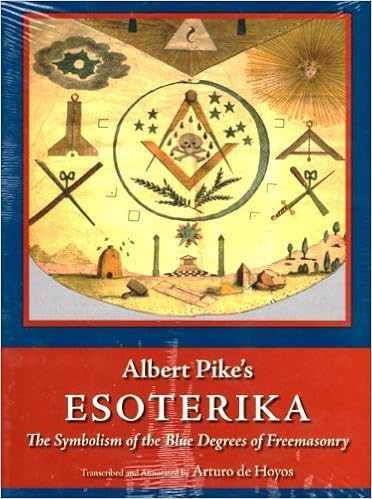
Albert Pike’s Esoterika – The Symbolism of the Blue Degrees of Freemasonry
By: Arturo De Hoyos
Contains the complete text of Albert Pikes never-before-published esoteric study of the symbols of Blue Lodge Degrees. Subjects include “The Compasses and the Square,” “The Weapons and Blows of the Assassins,” “The Three Grips,” “The Substitute for the Masters Word,” “The 47th Problem of Euclid,” “The Truth,” “Is the Cable-tow a Symbol?,” “Corner Stones,” “The Ladder of Jacob,” “Tubal Cain,” “Shibboleth,” and “Solomon and Hiram.”
In addition to the above, Ill. de Hoyos added five appendices:
[1] Parallels to the Symbolism of the Blue Degrees,
[2] A Letter Touching Masonic Symbolism,
[3] Pikes Dependence on Other Sources,
[4] The Faith of Albert Pike,
[5] Four Valuable Exposs.
The latter section includes the complete texts of “A Masons Examination” (1723), “The Grand Mystery of Free Masons Discovered (1725), Samuel Prichards “Masonry Dissected” (1730), and “Jachin and Boaz” (1762). The editors critical notes help the reader follow Pikes dissertation and provide additional documentation. Clothbound with gilded cover and decorative dust jacket; 501 pages; illustrated, with exhaustive index.

The Masonic Magician: The Life and Death of Count Cagliostro and His Egyptian Rite
By: Philipa Faulks (Author), Robert Cooper (Author)
Miracle-worker or man of straw? Count Alessandro Cagliostro was a cult figure of European society in the tumultuous years leading to the French Revolution. An alchemist, healer and Freemason, he inspired both wild devotion and savage ridicule – as well as novels by Alexandre Dumas, a drama by Goethe and Mozart’s opera The Magic Flute.
Count Alessandro Cagliostro’s sincere belief in the magical powers, including immortality, conferred by his Egyptian Rite of Freemasonry won him fame, but made him dangerous enemies, too. His celebrated travels through the Middle East and the capitals of Europe ended abruptly in Rome in 1789, where he was arrested by the Inquisition and condemned to death for heresy.
The Masonic Magician tells Cagliostro’s extraordinary story, complete with the first English translation of his Egyptian Rite of Freemasonry ever published. The authors examine the case made against him, that he was an impostor as well as a heretic, and find that the Roman Church, and history itself, have done him a terrible injustice.
This engaging account, drawing on remarkable new documentary evidence, shows that the man condemned was a genuine visionary and true champion of Freemasonry. His teachings have much to reveal to us today, not just of the secrets of the movement, but of the mysterious hostility it continues to attract.

Harry Carr’s World of freemasonry
By: Harry Carr
The fruits of a lifetime of study by one of the world’s best known and distinguished masonic writers and lecturers. Reproduced are 15 of the author’s most noteworthy and fascinating articles covering a wide range of masonic subjects that all will enjoy and understand.

The Origins of Freemasonry: Scotland’s Century, 1590 – 1710
By: David Stevenson
This book is a new edition of David Stevenson’s classic account of the origins of Freemasonry, a brotherhood of men bound together by secret initiatives, rituals and modes of identification with ideals of fraternity, equality, toleration and reason.
Beginning in Britain, Freemasonry swept across Europe in the mid-eighteenth century in astonishing fashion–yet its origins are still hotly debated today.
The prevailing assumption has been that it emerged in England around 1700, but David Stevenson demonstrates that the real origins of modern Freemasonry lie in Scotland around 1600, when the system of lodges was created by stonemasons with rituals and secrets blending medieval mythology with Renaissance and seventeenth-century history.
This fascinating work of historical detection will be essential reading for anyone interested in Renaissance and seventeenth-century history, for freemasons themselves, and for those readers captivated by the secret societies at the heart of the bestselling The Da Vinci Code.
David Stevenson is Emeritus Professor of Scottish History at the University of St. Andrews. His many previous publications include The Scottish Revolution, 1637-1644; Revolution and Counter-Revolution in Scotland, 1644-1651; and The First Freemasons; Scotland, Early Lodges and their Members.

Freemason’s Guide and Compendium
By: Bernard E. Jones,
First published in 1950, the ‘Freemasons’ Guide and Compendium’ is filled with authentic, detailed information on a wide variety of subjects related to masons and masonry.
Written by an experienced Freemason with the interests of rank-and-file members of the ordinary lodge in mind?especially the young Craftsman who wished to learn the nature of Freemasonry’s claim to have a history that goes back to ancient days? it provides key facts about masonic history, tradition, and lore. In doing so, the book offers a far greater scope of information than any other comparable book.
And Bernard E. Jones critically examines conflicting ideas about how some of the traditions came to be, coming to conclusions of his own.
Recent Articles: Esoteric Masonry
 Explore the multifaceted concept of the Divine across various cultural and religious perspectives. Delve into the intriguing deliberations on the Great Architect, Demiurge, and their roles in shaping our understanding of the cosmos, blending philosophical, theological, and metaphysical insights into a rich tapestry of human spirituality. |
 Unveiling the Mysteries: Explore the Enigmatic World of Rosicrucianism! Dive into the fascinating origins and teachings of the Rosicrucian tradition, shaped by the mythical figure Christian Rosenkreuz. Discover the secrets of alchemy, spiritual transformation, and esoteric knowledge. Unlock the hidden wisdom that has captivated seekers for centuries. Unleash your inner mystic today! |
 An Esoteric Interpretation of the Holy Royal Arch Delving into the profound mysteries of the Holy Royal Arch, Matt DA Fletcher offers an esoteric interpretation that challenges the conventional understanding of Freemasonry. While Craft Masonry is clear in its teachings, the Royal Arch remains an enigma for many. Fletcher's exploration uncovers the symbolic and philosophical depths of this degree, revealing its significance in the Mason's journey towards reintegration with the Creator. |
 Stoicism, Freemasonry, and the Modern Man Discover how the ancient wisdom of Stoicism can enrich Freemasonry and modern life. Dr. Chacón-Lozsán Francisco M.˙.M.˙. explores Stoic principles like virtue, resilience, and inner peace, offering practical insights for today's challenges. Learn how these timeless teachings can foster personal growth, ethical conduct, and emotional stability. |
 Explore the evolution of Masonic rites with the Universal Rite, a modern adaptation of the Ancient and Accepted Scottish Rite. Discover how it integrates contemporary principles, promotes intercultural dialogue, and ensures the timeless values of Freemasonry remain relevant in today's world. |
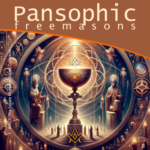 Unveil the secrets of Pansophic Freemasonry, a transformative journey through the ancient mystical traditions. Delve into the sacred realms of Rosicrucianism, Templar wisdom, Kabbalah, Gnosticism, and more. Discover the Graal, the sacred Grail that connects all esoteric paths. Embrace a holistic spiritual quest that reveals the profound mysteries of self and the universe. |
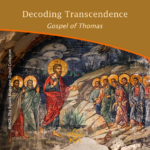 Dive into a spiritual journey where self-awareness is the key to enlightenment. The Gospel of Thomas and Masonic teachings converge on the profound truth that the path to transcendent wisdom lies within us. Embrace a diversified understanding of spirituality, emphasizing introspection as the gateway to a universally respected enlightenment. Explore, understand, transcend. |
 Philosophy the Science of Estimating Values Philosophy is the science of estimating values. The superiority of any state or substance over another is determined by philosophy. By assigning a position of primary importance to what remains when all that is secondary has been removed, philosophy thus becomes the true index of priority or emphasis in the realm of speculative thought. The mission of philosophy a priori is to establish the relation of manifested things to their invisible ultimate cause or nature. |
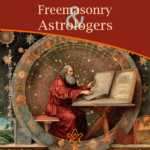 Unlocking the Mysteries: The Surprising Connection Between Freemasonry and Astrologers Revealed! Delve into the intriguing world of Freemasonry and explore its ties to astrological practices. Discover how these two distinct realms intersect, offering a fascinating glimpse into the esoteric interests of some Freemasons. Uncover the hidden links and unravel the enigmatic bond between Freemasonry and astrologers! |
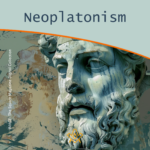 Neoplatonism, a philosophy with profound influence from the 3rd to the 6th century, merges Platonic ideals with Eastern thought, shaping Western and Middle-Eastern philosophy for two millennia. It emphasizes the unity of the individual with the supreme 'One', blending philosophy with theology and impacting major religious and philosophical movements, including Christianity and Islam. |
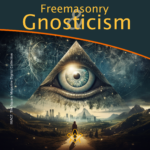 The enigmatic allure of Freemasonry's ancient rituals and Gnosticism's search for hidden knowledge capture the human spirit's endless quest for enlightenment. Between the stonemason's square and the Gnostic's divine spark lies a tantalizing intersection of philosophy, spirituality, and the pursuit of esoteric wisdom. Both traditions beckon with the promise of deeper understanding and moral elevation, inviting those who are drawn to unravel the tapestries of symbols and allegories. Whether through the fellowship of the lodge or the introspective journey of the soul, the paths of Freemasonry and Gnosticism represent a yearning to connect with something greater than ourselves—an impulse as old as time and as compelling as the mysteries they guard. |
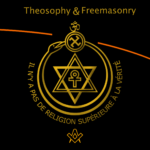 Embark on a journey through time and spirituality with our in-depth exploration of the Theosophical Society's Seal. This ancient emblem, rich with symbols, bridges humanity with the cosmos, echoing through the world's great faiths and diverse cultures. Our paper delves into the six mystical symbols, untangling their profound meanings and tracing their presence in historic art worldwide. Unaffiliated with worldly movements, these symbols open a window to esoteric wisdom. We also probe potential parallels with Freemasonry, seeking threads that might connect these storied organizations. Join us in unveiling the universal language of the spirit encoded within this enigmatic Seal. |
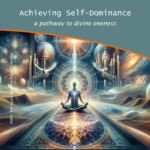 Discover the pathway to divine oneness through the concept of self-dominance. This thought-provoking essay explores the profound connection between self-control, spiritual growth, and achieving unity with the divine essence. With an interdisciplinary approach, it offers practical steps towards expanding consciousness and deepening our understanding of the divine. |
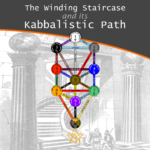 The Winding Staircase and its Kabbalistic Path The Winding Staircase in freemasonry is a renowned symbol of enlightenment. In this article, we explore its connection to Kabbalistic thought and how it mirrors the inner growth of a candidate as he progresses throughout his Masonic journey. From faith and discipline in Binah, to strength and discernment in Geburah, and finally to victory and emotional intuition in Netzach, each step represents a crucial aspect of personal development. Join us as we delve into the esoteric meanings of this powerful symbol. |
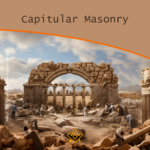 Unravel the mystic origins of Capitular Masonry, a secretive Freemasonry branch. Explore its evolution, symbolic degrees, and the Royal Arch's mysteries. Discover the Keystone's significance in this enlightening journey through Masonic wisdom, culminating in the ethereal Holy Royal Arch. |
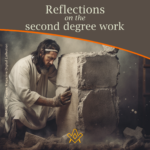 Reflections on the Second Degree Work Bro. Draško Miletić offers his reflections on his Second Degree Work – using metaphor, allegory and symbolism to understand the challenges we face as a Fellow Craft Mason to perfect the rough ashlar. |
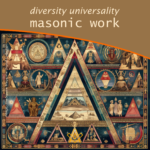 Diversity and Universality of Masonic Work Explore the rich tapestry of Masonic work, a testament to diversity and universality. Uncover its evolution through the 18th century, from the stabilization of Symbolic Freemasonry to the advent of Scottish rite and the birth of Great Continental Rites. Dive into this fascinating journey of Masonic systems, a unique blend of tradition and innovation. Antonio Jorge explores the diversity and universality of Masonic Work |
 Nonsense as a Factor in Soul Growth Although written 100 years ago, this article on retaining humour as a means of self-development and soul growth is as pertinent today as it was then! Let us remember the words of an ancient philosopher who said, when referring to the court jester of a king, “It takes the brightest man in all the land to make the greatest fool.” |
 Freemasonry: The Robe of Blue and Gold Three Fates weave this living garment and man himself is the creator of his fates. The triple thread of thought, action, and desire binds him when he enters into the sacred place or seeks admittance to the Lodge, but later this same cord is woven into the wedding garment whose purified folds shroud the sacred spark of his being. - Manly P Hall |
 By such a prudent and well regulated course of discipline as may best conduce to the preservation of your corporal and metal faculties in the fullest energy, thereby enabling you to exercise those talents wherewith god has blessed you to his glory and the welfare of your fellow creatures. |
 Jacob Ernst's 1870 treatise on the Philosophy of Freemasonry - The theory of Freemasonry is based upon the practice of virtuous principles, inculcating the highest standard of moral excellence. |
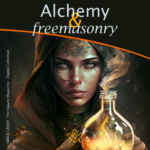 Alchemy, like Freemasonry, has two aspects, material and spiritual; the lower aspect being looked upon by initiates as symbolic of the higher. “Gold” is used as a symbol of perfection and the earlier traces of Alchemy are philosophical. A Lecture read before the Albert Edward Rose Croix Chapter No. 87 in 1949. by Ill. Bro. S. H. Perry 32° |
 The spirit of the Renaissance is long gone and today's globalized and hesitant man, no matter ideology and confession, is the one that is deprived of resoluteness, of decision making, the one whose opinion doesn't matter. Article by Draško Miletić, |
 A Mason's Work in the First Degree Every Mason's experiences are unique - here writer and artist Draško Miletić shares insights from his First Degree Work. |
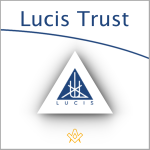 Initiation and the Lucis Trust The approach of the Lucis Trust to initiation may differ slightly to other Western Esoteric systems and Freemasonry, but the foundation of training for the neophyte to build good moral character and act in useful service to humanity is universal. |
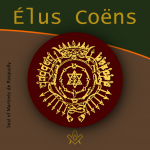 Who were the mysterious 18th century Élus Coëns – a.k.a The Order of Knight-Masons Elect Priests of the Universe – and why did they influence so many other esoteric and para-Masonic Orders? |
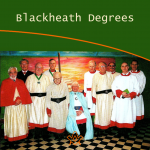 Bro. Chris Hatton gives us his personal reflections on the history of the 'house at Blackheath and the Blackheath Orders', in this wonderful tribute to Andrew Stephenson, a remarkable man and Mason. |
 Book Review - Cagliostro the Unknown Master The book review of the Cagliostro the Unknown Master, by the Editor of the book |
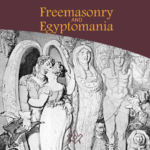 We explore fascinating and somewhat contentious historical interpretations that Freemasonry originated in ancient Egypt. |
 Is Freemasonry esoteric? Yes, no, maybe! |
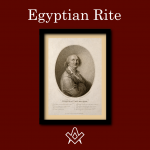 Egyptian Freemasonry, founder Cagliostro was famed throughout eighteenth century Europe for his reputation as a healer and alchemist |
masonic knowledge
to be a better citizen of the world
share the square with two brothers

click image to open email app on mobile device



